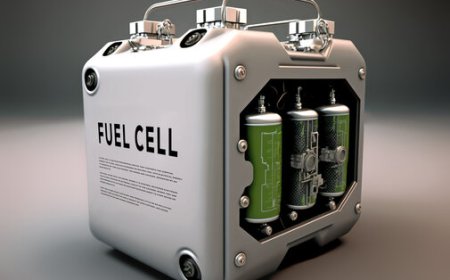Full Size Tools: The Comprehensive Guide for Serious DIYers and Pros in the US
Introduction
If you have ever wrestled with an undersized screwdriver or begged a compact drill for a little more torque, you already know why Full Size Tools belong in every serious workshop. Designed for maximum leverage, power, and durability, these professional-grade implements help contractors, auto enthusiasts, and weekend warriors accomplish demanding jobs with speed and confidence. In this in-depth guide, well explore what distinguishes full-size equipment, outline the main tool families youll encounter, and share practical buying and maintenance tips for American users. Along the way, well weave in keyword ideas such as professional-grade hand tools, full-size power drill, and industrial workshop gear to give search enginesand human readersa rich, helpful context.
What Counts as a Full-Size Tool?
Full Size Tools (2) are typically built on a chassis or handle length optimized for leverage rather than portability. Compared with their compact or mini counterparts, they feature:
-
Longer handles on hammers, wrenches, and ratchets to maximize swing arc and torque.
-
Higher wattage motors in corded or cordless power tools, delivering sustained power under load.
-
Heavier constructionoften forged steel or high-grade compositesto withstand industrial abuse.
-
Replaceable or serviceable components (brushes, bearings, blades) that extend lifespan.
Because they emphasize strength and endurance, these tools generally weigh more and require slightly more storage space, yet the payoff comes in smoother workflow and fewer tool failures.
Key Categories of Full-Size Tools
1. Hand Tools for Leverage
-
Full-size combination wrench sets reach up to 24 inches in length, giving mechanics the leverage to crack seized bolts on automotive frames.
-
Full-size hammers and malletsranging from 16-ounce framing hammers to 8-pound sledgehammerssupply the striking force needed for demolition or framing work.
-
Professional-grade pry bars span 2448 inches, letting contractors lift wall plates or concrete forms without bending delicate inserts.
2. Power Tools Built for Duty Cycles
-
Full-size power drills (3) sport -inch keyless chucks, multi-speed gearboxes, and brushless motors rated for continuous use on job sites.
-
Full-size circular saws employ 7-inch blades and rugged magnesium shoes; they rip dimensional lumber quicker than compact saws can.
-
Heavy-duty impact wrenches deliver upwards of 1,000 ft-lb of breakaway torque, essential for commercial tire service or steel fabrication.
3. Stationary Equipment
For shops with stable floor space, stationary full-size equipment multiplies productivity:
-
Floor-standing drill presses give precise vertical drilling with depth stopsideal for cabinetry or metal fabrication.
-
14-inch bandsaws tackle resawing thick hardwood planks for furniture makers.
-
Bench grinders with 8-inch wheels speed through beveling and tool re-sharpening.
These larger machines require 120 V or 240 V circuits; check local codes before installation.
Why Choose Full-Size Over Compact?
| Consideration | Full-Size Advantage | Compact Advantage |
|---|---|---|
| Power & torque | Handles demanding tasks without bogging down | Lighter for overhead work |
| Durability | Thicker casings and serviceable parts | Lower initial cost |
| Ergonomics | Longer handles reduce effort per stroke | Easier to maneuver in tight spots |
| Longevity | Designed for years of job-site abuse | Handy for occasional or hobby use |
For professionals who depend on uptime, the resilience and strength of Full Size Tools (4) outweigh portability concerns.
Buying Guide for US Shoppers
-
Check ANSI or ASME Standards
Look for compliance markings that guarantee load ratings, especially on sockets and lifting bars. -
Compare Warranty Terms
Lifetime warranties on hand tools and three to five years on cordless motors are industry benchmarks. -
Evaluate Battery Ecosystems
If you favor cordless full-size gear, buy into a voltage platform (e.g., 20 V Max, 18 V, or 40 V) that covers drills, saws, grinders, and lawn equipment. Staying within one battery family slashes charging time and cost. -
Test Ergonomics In-Store
Grip shape and balance vary widely. Swing a framing hammer or heft a 10-inch miter saw in person before committingespecially if youll use it eight hours a day. -
Mind US Electrical Codes
Heavy benchtop tools often ship with 15-amp plugs. Verify that your shop circuit matches the amperage to avoid nuisance breaker trips and motor damage.
Caring for Your Investment
Owning Full Size Tools (5) is a commitment. Follow these best practices to keep them working like new:
-
Routine Cleaning: Wipe sawdust, oil, and grime from moving parts at the end of each session to prevent rust and gumming.
-
Lubrication Schedule: Grease gears and bearings per manufacturer intervals; an inexpensive grease gun can double the life of high-load joints.
-
Sharpen & Replace Blades: A dull table-saw blade burns wood and strains motors. Swap or sharpen after 5075 board-feet of hardwood cutting.
-
Calibrate & Align: Monthly checks on drill-press run-out or miter-saw bevel angles keep precision jobs on spec.
Safety Essentials
Because larger tools produce higher forces, safety stakes rise accordingly:
-
Personal Protective Equipment: Always pair Full Size Tools (6) with ANSI-rated eye protection, leather gloves, and NIOSH-approved dust masks or respirators.
-
Secure Work Pieces: Use clamps or vices to counter kickback when ripping 2 lumber or drilling steel plate.
-
Follow Torque Specs: Overtightening fasteners with an impact wrench can strip threads; verify manufacturer torque charts.
-
Mind Recoil: Full-size nailers and rotary hammers generate significant reactive forcebrace yourself and use two hands when possible.
Frequently Asked Questions
Q: Are full-size cordless tools as powerful as corded models?
A: High-voltage cordless lines now rival 15-amp corded gear for many tasks. However, continuous heavy ripping or grinding may still favor corded Full Size Tools (7) for unlimited runtime.
Q: Can hobbyists justify the extra cost?
A: If you routinely tackle home remodels, automotive repairs, or furniture builds, the added performance and lifespan offset the price premium. Casual users might mix compact tools for light tasks with one or two full-size workhorsessuch as a -inch hammer drillfor tougher jobs.
Q: What storage solutions suit oversized gear?
A: Wall-mounted French cleats or modular steel pegboards keep hammers and wrenches visible. For power equipment, consider rolling tool chests or mobile base stands that let bulkier machines tuck away when not in use.
Conclusion
Whether youre framing a new deck, swapping an engine, or building custom cabinetry, Full Size Tools (8) deliver the power, reach, and durability the job demands. By selecting ANSI-rated equipment, maintaining it diligently, and respecting safety protocols, American craftsmen and DIYers will enjoy yearsoften decadesof reliable service.




























